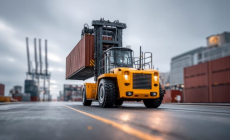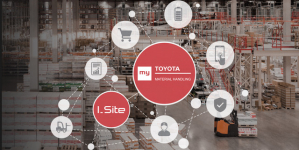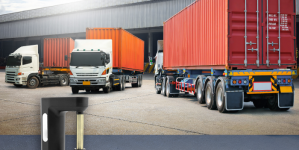-
AI startup Onton raises $7.5M to reinvent the way the world discovers and decides what to buy - November 26, 2025
-
Forklift Market Positions for Recovery as Confidence Expected to Build from 2026 - November 26, 2025
-
PROCare achieves 300% order capacity increase and 99% picking accuracy with Forterro’s ERP solution, Orderwise - November 26, 2025
-
DHL boosts operational efficiency and customer communications with HappyRobot’s AI Agents - November 25, 2025
-
STENA LINE TEAMS UP WITH CAMERA TELEMATICS TO DRIVE SAFETY IMPROVEMENTS AT IRISH SEA PORTS - November 25, 2025
-
Another design award for Toyota’s lithium-ion Traigo_i counterbalanced forklift - November 21, 2025
-
Stuut Technologies Raises $29.5 Million Series A Led by Andreessen Horowitz to Automate Accounts Receivable Work - November 20, 2025
-
INCREASED DIGITAL INVESTMENT REQUIRED TO KEEP PACE WITH 2026 CUSTOMS CHANGES - November 19, 2025
-
FULFILMENT SOLUTIONS FOR SPORTS MERCHANDISE: KEEPING OUR EYE ON THE GAME - November 19, 2025
-
COMPLEX, COSTLY & CONFUSING – THE END OF DE MINIMIS - November 19, 2025
The future of the UK freight industry
The import and export of goods and materials around, and in and out of the country is hugely important to the UK.
In fact, in 2017 it was reported that logistics added £121 billion to the UK economy, while also helping to employ a further 2.5 million people. It’s easy to see why it’s important, and its importance is expected to continue to grow over the next 30 years.
Because of this, many people have been looking at our current freight transport methods to see what can be done, and what other areas could be improved.
Aviation 2050
One huge area is through the use of air freight. While we currently use air cargo methods here in the UK, there is still a huge potential to be unlocked.
The government have announced plans to unveil a white paper later on in 2019, where they’ll outline their plans on improving aviation by 2050. However, many have pointed out that there needs to be a whole chapter outlining what needs to be done, and will be done, to improve our air freight activities, especially with Brexit looming.
So, let’s take a look at the UK freight industry as it is below.
Air
While we’re on the subject, let’s start with air freight. Currently, it represents around 40% of the UK’s imports and exports value. As you can see, this is quite a high number, and with Brexit on the horizon, this could be the perfect opportunity to continue to trade quicker and easier with the rest of Europe.
In fact, East Midlands Airport (EMA) alone, part of the Manchester Airports Group (MAG) handles 356,000 tonnes of cargo each year. This equates to £40bn of trade of imports and exports between the EU and £10bn between non-EU countries. The airports are now calling on the government to help them unlock further potential by 2050.
Road
There’s a lot of UK freight activity when it comes to roads. In 2016 89% of domestic goods were moved by road. This continued to increase and by 2018 it was reported that domestic freight goods lifted was 1.41 billion tonnes, while goods moved stood at 152 billion.
Rail
While rail plays a big role in freight in the UK, it is much lower than the other two. However, National Rail is predicting a 32% growth by 2033/34. But, this will all depend on investments in rail networks, which is already suffering throughout the UK, and could continue to suffer as we move forward. However, it terms of helping people travel, it looks set to be key for domestic travel.
While domestic freight here in the UK looks to be continuing to improve, it appears to be clear that more needs to be done with air freight, especially due to Brexit. If road and rail imports and exports are affected, this could be the clear front runner when helping the UK as we move forward, especially as it already contributes so much.

































